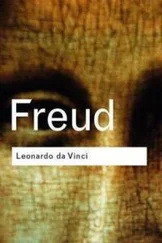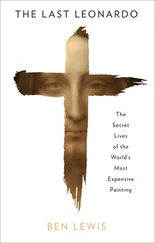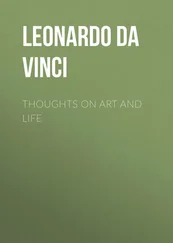Leonardo da Vinci - The Notebooks of Leonardo Da Vinci. Complete
Здесь есть возможность читать онлайн «Leonardo da Vinci - The Notebooks of Leonardo Da Vinci. Complete» — ознакомительный отрывок электронной книги совершенно бесплатно, а после прочтения отрывка купить полную версию. В некоторых случаях можно слушать аудио, скачать через торрент в формате fb2 и присутствует краткое содержание. Жанр: foreign_prose, foreign_home, visual_arts, foreign_antique, на английском языке. Описание произведения, (предисловие) а так же отзывы посетителей доступны на портале библиотеки ЛибКат.
- Название:The Notebooks of Leonardo Da Vinci. Complete
- Автор:
- Жанр:
- Год:неизвестен
- ISBN:нет данных
- Рейтинг книги:3 / 5. Голосов: 1
-
Избранное:Добавить в избранное
- Отзывы:
-
Ваша оценка:
- 60
- 1
- 2
- 3
- 4
- 5
The Notebooks of Leonardo Da Vinci. Complete: краткое содержание, описание и аннотация
Предлагаем к чтению аннотацию, описание, краткое содержание или предисловие (зависит от того, что написал сам автор книги «The Notebooks of Leonardo Da Vinci. Complete»). Если вы не нашли необходимую информацию о книге — напишите в комментариях, мы постараемся отыскать её.
The Notebooks of Leonardo Da Vinci. Complete — читать онлайн ознакомительный отрывок
Ниже представлен текст книги, разбитый по страницам. Система сохранения места последней прочитанной страницы, позволяет с удобством читать онлайн бесплатно книгу «The Notebooks of Leonardo Da Vinci. Complete», без необходимости каждый раз заново искать на чём Вы остановились. Поставьте закладку, и сможете в любой момент перейти на страницу, на которой закончили чтение.
Интервал:
Закладка:
But every thing will be upside down.
Combination of different colours in cast shadows.
272
That which casts the shadow does not face it, because the shadows are produced by the light which causes and surrounds the shadows. The shadow caused by the light e , which is yellow, has a blue tinge, because the shadow of the body a is cast upon the pavement at b , where the blue light falls; and the shadow produced by the light d , which is blue, will be yellow at c , because the yellow light falls there and the surrounding background to these shadows b c will, besides its natural colour, assume a hue compounded of yellow and blue, because it is lighted by the yellow light and by the blue light both at once.
Shadows of various colours, as affected by the lights falling on them. That light which causes the shadow does not face it.
[Footnote: In the original diagram we find in the circle e " giallo " (yellow) and the cirle d " azurro" (blue) and also under the circle of shadow to the left " giallo " is written and under that to the right " azurro ".
In the second diagram where four circles are placed in a row we find written, beginning at the left hand, " giallo " (yellow), " azurro " (blue), " verde " (green), " rosso " (red).]
The effect of colours in the camera obscura (273-274).
273
The edges of a colour(ed object) transmitted through a small hole are more conspicuous than the central portions.
The edges of the images, of whatever colour, which are transmitted through a small aperture into a dark chamber will always be stronger than the middle portions.
274
OF THE INTERSECTIONS OF THE IMAGES IN THE PUPIL OF THE EYE.
The intersections of the images as they enter the pupil do not mingle in confusion in the space where that intersection unites them; as is evident, since, if the rays of the sun pass through two panes of glass in close contact, of which one is blue and the other yellow, the rays, in penetrating them, do not become blue or yellow but a beautiful green. And the same thing would happen in the eye, if the images which were yellow or green should mingle where they [meet and] intersect as they enter the pupil. As this does not happen such a mingling does not exist.
OF THE NATURE OF THE RAYS COMPOSED OF THE IMAGES OF OBJECTS, AND OF THEIR INTERSECTIONS.
The directness of the rays which transmit the forms and colours of the bodies whence they proceed does not tinge the air nor can they affect each other by contact where they intersect. They affect only the spot where they vanish and cease to exist, because that spot faces and is faced by the original source of these rays, and no other object, which surrounds that original source can be seen by the eye where these rays are cut off and destroyed, leaving there the spoil they have conveyed to it. And this is proved by the 4th [proposition], on the colour of bodies, which says: The surface of every opaque body is affected by the colour of surrounding objects; hence we may conclude that the spot which, by means of the rays which convey the image, faces—and is faced by the cause of the image, assumes the colour of that object.
On the colours of derived shadows (275. 276).
275
ANY SHADOW CAST BY AN OPAQUE BODY SMALLER THAN THE LIGHT CAUSING THE SHADOW WILL THROW A DERIVED SHADOW WHICH IS TINGED BY THE COLOUR OF THE LIGHT.
Let n be the source of the shadow e f ; it will assume its hue. Let o be the source of h e which will in the same way be tinged by its hue and so also the colour of v h will be affected by p which causes it; and the shadow of the triangle z k y will be affected by the colour of q , because it is produced by it. [7] In proportion as c d goes into a d , will n r s be darker than m ; and the rest of the space will be shadowless [11]. f g is the highest light, because here the whole light of the window a d falls; and thus on the opaque body m e is in equally high light; z k y is a triangle which includes the deepest shadow, because the light a d cannot reach any part of it. x h is the 2nd grade of shadow, because it receives only 1/3 of the light from the window, that is c d . The third grade of shadow is h e , where two thirds of the light from the window is visible. The last grade of shadow is b d e f , because the highest grade of light from the window falls at f .
[Footnote: The diagram Pl. III, No. 1 belongs to this chapter as well as the text given in No. 148. Lines 7-11 (compare lines 8-12 of No. 148) which are written within the diagram, evidently apply to both sections and have therefore been inserted in both.]
276
OF THE COLOURS OF SIMPLE DERIVED SHADOWS.
The colour of derived shadows is always affected by that of the body towards which they are cast. To prove this: let an opaque body be placed between the plane s c t d and the blue light d e and the red light a b , then I say that d e , the blue light, will fall on the whole surface s c t d excepting at o p which is covered by the shadow of the body q r , as is shown by the straight lines d q o e r p . And the same occurs with the light a b which falls on the whole surface s c t d excepting at the spot obscured by the shadow q r ; as is shown by the lines d q o , and e r p . Hence we may conclude that the shadow n m is exposed to the blue light d e ; but, as the red light a b cannot fall there, n m will appear as a blue shadow on a red background tinted with blue, because on the surface s c t d both lights can fall. But in the shadows only one single light falls; for this reason these shadows are of medium depth, since, if no light whatever mingled with the shadow, it would be of the first degree of darkness &c. But in the shadow at o p the blue light does not fall, because the body q r interposes and intercepts it there. Only the red light a b falls there and tinges the shadow of a red hue and so a ruddy shadow appears on the background of mingled red and blue.
The shadow of q r at o p is red, being caused by the blue light d e ; and the shadow of q r at o' p' is blue being caused by the red light a b . Hence we say that the blue light in this instance causes a red derived shadow from the opaque body q' r' , while the red light causes the same body to cast a blue derived shadow; but the primary shadow [on the dark side of the body itself] is not of either of those hues, but a mixture of red and blue.
The derived shadows will be equal in depth if they are produced by lights of equal strength and at an equal distance; this is proved. [Footnote 53: The text is unfinished in the original.]
[Footnote: In the original diagram Leonardo has written within the circle q r corpo obroso (body in shadow); at the spot marked A, luminoso azzurro (blue luminous body); at B, luminoso rosso (red luminous body). At E we read ombra azzurra (blue tinted shadow) and at D ombra rossa (red tinted shadow).]
On the nature of colours (277. 278).
277
No white or black is transparent.
278
OF PAINTING.
Читать дальшеИнтервал:
Закладка:
Похожие книги на «The Notebooks of Leonardo Da Vinci. Complete»
Представляем Вашему вниманию похожие книги на «The Notebooks of Leonardo Da Vinci. Complete» списком для выбора. Мы отобрали схожую по названию и смыслу литературу в надежде предоставить читателям больше вариантов отыскать новые, интересные, ещё непрочитанные произведения.
Обсуждение, отзывы о книге «The Notebooks of Leonardo Da Vinci. Complete» и просто собственные мнения читателей. Оставьте ваши комментарии, напишите, что Вы думаете о произведении, его смысле или главных героях. Укажите что конкретно понравилось, а что нет, и почему Вы так считаете.












